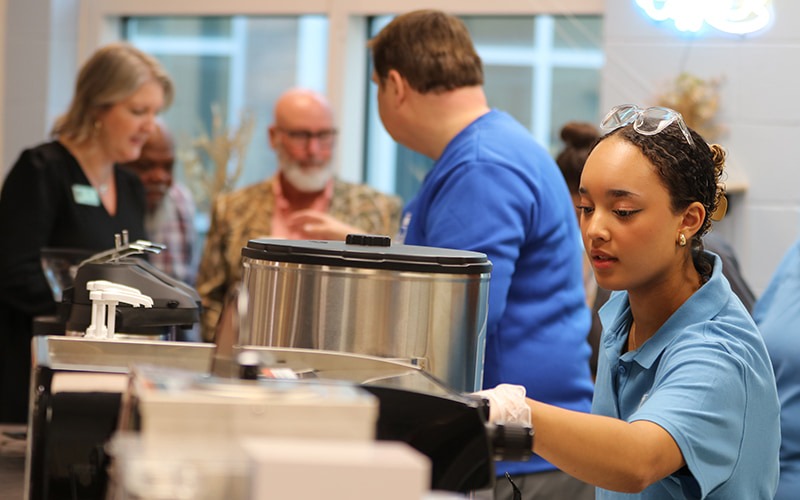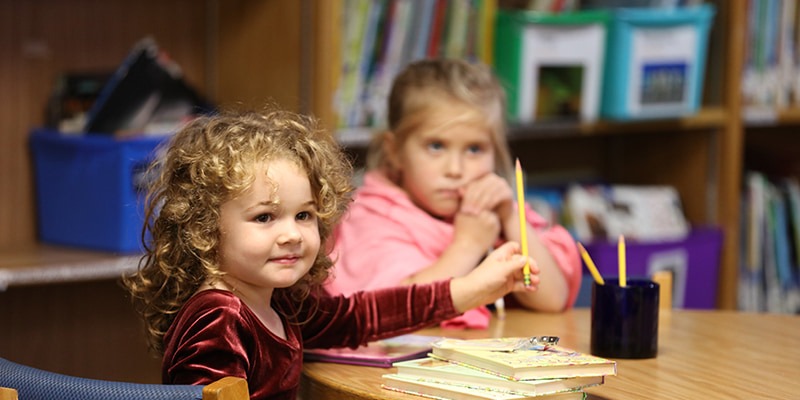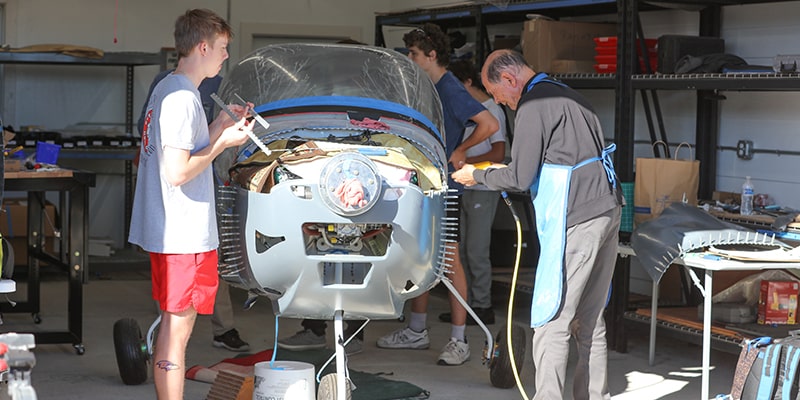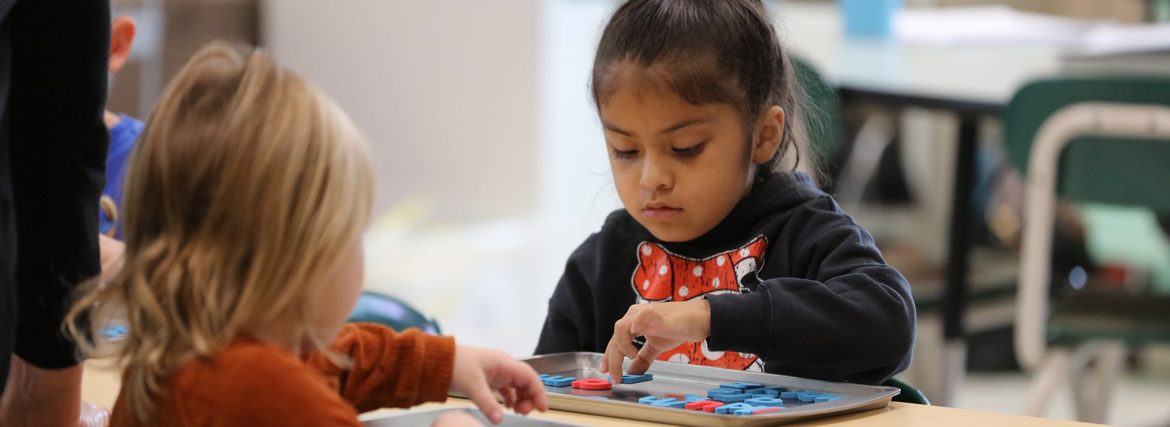Teaching What Tomorrow Demands
Continuously Providing What is ‘Best for Students’
On North Carolina’s Outer Banks, the old model of school—one path, one pace, one future—no longer applies. Superintendent Basnight puts it simply: “Every decision starts with what’s best for students.”
In Dare County Schools (DCS), that idea is more than a slogan. It’s a working method that shows up in personalized instruction, embedded mental-health supports, and a career-technical engine matched to the local economy—boats, planes, hospitality, coastal science—alongside high-expectation academics.
“We outlawed the word (COVID) everyone uses about the past few years,” Basnight, Dare County Superintendent, says. “We won’t lean on it as an excuse. We start where each student is, and we move forward.”
Purposeful, Specific, Targeted
Internally, the district calls its approach PST—purposeful, specific, targeted. Rather than blanket fixes, DCS builds systems that meet real needs for real people.
On the student and staff side, that has meant taking mental health seriously. Each school has a counselor, and the district’s three social workers serve Dare’s distinct communities—Hatteras, Roanoke Island, the beach schools—while flexing to where needs emerge. DCS recently partnered with Daybreak for additional counseling capacity and, through the county’s Department of Health & Human Services, is piloting on-site mental-health clinicians who see students during the school day. To make care more consistent, the district is launching a trauma-response protocol so that any teacher, student, or parent who sees a red flag knows exactly how the system will respond.
That ecosystem rests on unusually strong county partnerships. Health & Human Services provides a nurse in every school. The Sheriff’s Office staffs nine School Resource Officers; two towns cover the others. “Our tentacles go in all directions,” Basnight notes. “We don’t do school in a silo.”
Career & College, Not Either/Or
When Dr. Shannon Castillo took the helm of Career & Technical Education (CTE) in 2022, just 169 students were CTE “concentrators” (completing at least two courses in a pathway). Last year 246 students completed a full pathway—and even more striking, students earned 2,655 industry credentials, up from ~600 just a few years earlier. Credential attainment jumped from 16% to 87.4% in that span. These are adult-level certificates—Adobe Photoshop, ServeSafe, FAA ground school—that belong on real résumés.

Two reasons: DCS designs CTE around local industry and it lets students drive. “We can’t offer every program under the sun,” Castillo says. “So we do a comprehensive needs assessment and build where jobs and interests intersect.”
In Manteo, middle-schoolers hand-build a skiff in STEM class; in high school, they consolidate those skills by building a 21-foot center-console boat in carpentry—using the same methods nearby yards use to craft 77-foot yachts. Students can step into a pre-apprenticeship with Bayliss Boatworks as they complete the pathway.
At First Flight High School, the district’s aviation program nods to the Wright Brothers—and leaps forward. Through Tango Flight, juniors and seniors are building a two-seat Vans RV-12 airplane that will be FAA-certified, in a workshop with windows that look directly onto the Wright Brothers Memorial. A retired Navy rear admiral instructs side-by-side with teachers, while the feeder middle school adds a drone program to extend the pipeline.
The curriculum surveys the entire sector—maintenance, piloting, aerospace—so students discover where they fit.
In Cape Hatteras, a 6–12 campus is converting a retired activity bus into a “skoolie” tiny home, a whole-school project that has budding designers drafting floor plans, career-tech students doing the build-out, and apparel & textile classes sewing custom seat covers for reading corners around the school. It’s hands-on transdisciplinarity with clear, marketable outcomes.
The district has layered in auto mechanics apprenticeships with local dealerships, welding credentials in partnership with the community college and a regional shipyard that services state ferries, and fire tech training at a town firehouse where students can become certified firefighters before graduation.
In hospitality, First Flight operates a student-run coffee shop inside the Child Nutrition program during breakfast service—an innovation coordinated so that sales comply with nutrition rules while students learn barista skills, inventory control, and point-of-sale operations. “It’s boosted breakfast participation and turned into a business lab,” says Assistant Superintendent Catie Spruill.
Just as important: internships. A dedicated coordinator places juniors and seniors according to their goals—airport, aquarium, Coastal Studies Institute, the Visitors Bureau, a funeral home, the hospital, town finance offices, hair salons, radio, real estate. “There are two wins,” Castillo says. “You either fall in love with a field—or you learn it isn’t for you before you spend time and money on it.”
Students also sit at the table. Two from each high school serve as Board of Education members (six total), rotating three per meeting. When policy intersects with student life, the board can ask a student directly how it lands. “That voice changes our decisions,” Basnight says.

And none of this dilutes academics. Dare’s schools post high performance and strong statewide reputations; students are admitted in significant numbers to Duke, UNC, NC State, East Carolina, and beyond. “We’re not choosing between career and college,” Basnight says. “We are building options so students can change direction without losing ground.”
Technology as a Tool, Not a Silo
Dare’s technology team is, by all accounts, elite—managing hardware, software, and classroom training while traveling the state with NC BOLD to present best practices. AI is a real topic, not a buzzword. Teachers learn its risks and uses; students learn where it fits. “The greatest tool in any classroom is a teacher,” Basnight says. “AI will shape the economy our students enter tomorrow. Our job is to teach both the power and the boundaries.”
Capital Where It Counts
The district’s board goals are straightforward: increase student learning; recruit and retain professionals; deliver high-quality professional development; increase safety and security; maintain, repair, and upgrade facilities; and grow support across the system. That plan is visible on the ground. DCS is constructing the Dare Early College—a 9–13 school on the College of The Albemarle campus.
The inaugural class began this fall in existing college space while the new facility rises. Elsewhere, a multiyear capital plan funds field houses, auxiliary gyms, cafeterias, and site upgrades across the 80-mile stretch from Kitty Hawk to Cape Hatteras.
The county commissioners have doubled down, too—funding two years of post-secondary tuition at the community college for any Dare graduate who chooses to stay and earn an associate degree or credential. It’s a fast track to local careers and a way to keep talent on the Banks.
Community at the Center
If there’s a through-line, it’s partnership. The Chamber of Commerce co-hosts specialized career fairs (including a maritime fair) and a year-long Leadership Academy that places one student from each high school alongside adult cohorts for monthly site visits and networking. That two-way learning—students glean industry realities, adults hear student perspectives—has become a quiet engine for aligning programs with jobs.
The Coastal Studies Institute creates internships in marine science and coastal resilience. Town fire departments train student firefighters. The Sheriff’s Office, health services, and towns co-fund nurses and SROs. “We are a large employer, yes,” Basnight says, “but we’re also part of a larger system. Our kids live in it. They should learn from it.”
The Road Ahead
Change takes time. Real, durable change—the kind that reshapes schedules, staffing, and the student experience—takes three to five years. DCS is entering year three of its latest push, and the results are beginning to compound: more CTE completions, credential surges, robust internship pipelines, a growing dual-enrollment footprint that’s nudging the college to add sections, strong academic outcomes, and capital projects that match program needs.

Dare County’s geography—12 schools spread over 80 miles—means no one-size-fits-all solution will work. “What Hatteras needs isn’t always what Kitty Hawk needs,” Basnight says. “We won’t blanket the district. We’ll be purposeful, specific, targeted.”
In practical terms, the next 18–24 months will bring a finished airplane at First Flight, the first pre apprentices from Manteo’s boat-building program, more welding and fire-tech credentials, deeper internships, and a rising early college. The mental-health system will standardize its trauma response, and embedded clinicians will expand their reach. Facilities will open and upgrade in sequence. The rest will follow the same rule DCS already lives by: ask what students need now to thrive tomorrow—and build it.
“We want every graduate to have real choices,” Basnight says. “College, career, military—it’s not either/or. It’s yes, and. Our job is to make sure they’re ready.”
AT A GLANCE
Who: Dare County Schools
What: Leading school district dedicated to student success and providing cutting edge curriculum options
Where: Dare County, North Carolina
Website: www.daretolearn.org
PREFERRED VENDORS/PARTNERS
College of The Albemarle: www.albemarle.edu
College of The Albemarle (COA) is the regional community college for Northeastern North Carolina, providing accessible, high-quality education across Camden, Chowan, Currituck, Dare, Gates, Pasquotank and Perquimans counties. With four campuses dedicated to student success, COA empowers individuals to achieve their goals, transforming lives and strengthening the future of our communities, where education meets opportunity.


